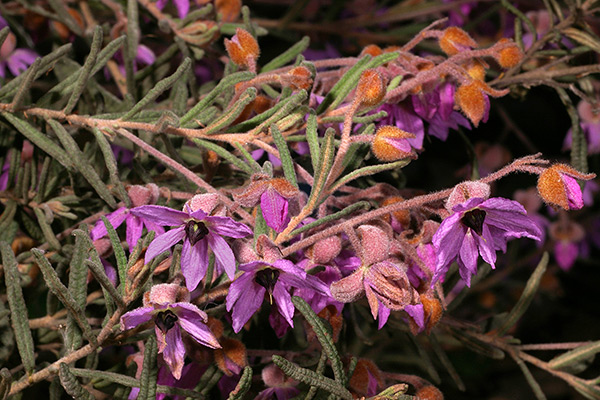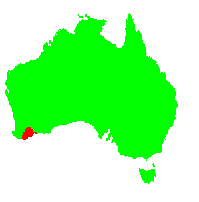General Description:
Lysiosepalum is a genus of 5 species, all occurring in the south and south-east of western Australia. They are closely related to Thomasia, Guichenotia and Lasiopetaum. L.involucratum is the best known and most widely cultivated member of the genus.
Lysiosepalum involucratum is a compact shrub up to 0.5 metres high by about 1 metre wide. The leaves are linear to slightly ovate in shape about 10 – 25 mm long, grey-green in colour and hairy. The flowers appear in spring and are pink to mauve. The petals are very small and the sepals provide the colourful parts of the flowers which are subtended by rusty, hairy bracteoles.
This is a very under-rated plant which deserves much wider cultivation. The plants form low, bushy shrubs with a growth habit which, when not in flower, is unspectacular but neat and compact. However, in late winter and spring the mauve-purple flowers appear in a massed display. Although native to a dry summer climate, L.involucratum is hardy in well drained soils in temperate areas of the eastern states, unlike many other plants from a similar natural habitat. It requires a position in full sun or partial shade and soils with good drainage. It tolerates extended dry conditions once established.
Propagation can be carried out from seed but this is rarely available. Cuttings of firm, current season’s growth usually strike reliably.

Lysiosepalum involucratum
Photo: Brian Walters
 Australian Native Plants Society (Australia)
Australian Native Plants Society (Australia)













